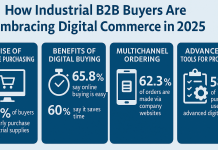E-COMMERCE AND E-COMMERCE SECURITY
Everything is now done through the internet, from grocery shopping to making payments to seeking professional advice. The Internet has emerged as the most important factor in bringing the globe closer together and promoting growth and development in practically every field. You can’t picture going through a day without using the internet because you use it every day to communicate critical information, have meetings, shop for important items, and make payments. The widespread use of the internet by the majority of people has made it a fantastic place for businesses to start and develop.
E-commerce businesses are less expensive to establish, expand your business’s reach from a small town to the entire world, and let you communicate effectively with your clients. This sector is fast expanding, but it, like any other wonderful thing, comes with pitfalls. The Internet has made things easier for us, but every e-commerce firm must take security precautions. Because the Internet is man-made, any information on it might be readily accessed and altered by exploiters unless significant security precautions are taken. Here are some things to keep in mind when it comes to e-commerce security.
WHAT ARE THE INTEGRAL REQUIREMENTS FOR E-COMMERCE?
1. Privacy: Information should be prevented from unauthorized parties
2. Authentication: identities of both sender and receiver should be proven
3. Integrity: provided information should not be tampered with or manipulated
4. Non-repudiation: confirmation should be given that the receiver received the things they ordered.
WHAT ARE THE RISKS INVOLVED IN E-COMMERCE SECURITY?
Card frauds
This is the most prevalent type of fraud in the e-commerce industry. Hackers get access to your card information, which may be used to withdraw money from your accounts, and they utilize various tools to penetrate the databases of e-commerce companies.
Malware
Malware is a malicious software program that attackers introduce into various files and web pages in order to obtain access to the essential information that customers and businesses have on these e-commerce platforms.
DDoS
On e-commerce websites, this is a type of cyber assault danger. Hackers take down websites by flooding their servers with requests from untraceable IP addresses, causing the websites to be down for a period of time.
Man-in-middle
Man-in-the-middle attackers trick individuals into connecting to a public network, and once they do, hackers have access to their browsers and all the information stored there, including credit card details, passwords, and browsing history.
Phishing scams
Phishing schemes often include sending emails with random unknown names about various shopping deals that people may be interested in, and when people respond with their personal information, the information is used to abuse you.
Bad-bots
There are numerous sorts of bots used by huge businesses all over the world to obtain specific types of information, but there are also some bad bots used by hackers to obtain product data, price data, and inventory information about a firm. These bots may obtain client information as well as company information.
WHAT PRECAUTIONS COULD BE TAKEN TO AVOID THE HAZARDS?
Use a trusted online payment processor
You must ensure that you have picked a safe and reliable transaction processor before accepting any online payment. Choose a processor that will assist and support your business as needed.
Keep a check on suspicious activities on the site
You should keep an eye on any strange activity on the website, such as excessive buying, shopping with several cards on a single account, and so on. If not addressed, significant repercussions may result.
Address verification
If there is any fraud, address verification may be able to detect it, but it is not the sole recommended security solution because the cardholder does not always access the card from the same location.
Encryption
Another technique is to encrypt data with a code that a hacker will be unable to decrypt because it is too tough to comprehend. Public-key encryption and symmetric key encryption are the two most common data encryption technologies.
Digital signature
Digital signatures offer your information or communication a distinct identity. It encrypts the communication just for the purpose of verification. The data is encrypted with a digital signature and cannot be changed afterward.
Secure hypertext transfer protocol
S-HTTP is a secure version of HTTP that includes authentication, public-key encryption, and digital signatures. It employs a protection mechanism that makes it harder for hackers to decrypt the encrypted data being transmitted.
Secure electronic transaction
The secure electronic transaction was developed in partnership with MasterCard and VISA to ensure the security of all parties involved in the online transaction and to handle challenging tasks such as cardholder identification and payment data authentication.
Business is fraught with dangers, and when it comes to e-commerce, the dangers double. The following are a few security concerns that exist with e-commerce, as well as possible solutions. The Internet is a godsend for personal and general development, but there are exploiters everywhere, and you must protect your business and all of its vital information. Get expert assistance with your website to ensure that crucial information does not get out.









